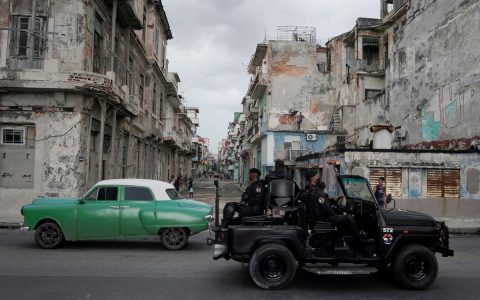
PARIS, 11 October 2021 (AFP) – “I want to see the plans!” Fatih Birol, Director of the International Energy Agency, said in Glasgow about COP26, the great meeting of the international community against climate change.
“How is transportation going to change? The electrical system?” asks this economist, who is particularly concerned about the persistence of coal as an energy source and the lack of resources in emerging countries.
– What do you expect from COP26? What does your success represent?
“I hope, above all, the strengthening of the commitments of countries in accordance with our international climate goals.
Secondly, and this is a major issue covered in the climate debate, the financing of clean energy in emerging countries. Over the next 20 years, more than 80% of emissions will come from emerging countries, which receive less than 20% investment in clean energy.
It is imperative that advanced economies, especially the G20, ensure that this money is in the decisions adopted at COP26.
The third point is political. COP leaders should send a clear, clear signal to investors: ‘If they invest in old energy sources, they will lose money.’
Many large emitters are committed to carbon neutrality by 2050. Do you see this commitment in the COP?
“Political dynamism is excellent, but this momentum must be transformed into concerted action on a global scale rather than sporadic initiatives.
Governments should create plans aimed at carbon neutrality. I am glad to see that many people have set goals for 2050, but this is not enough. We need to know how they are going to do it, I want to see their plans, their bases and steps. This applies to China, the United States, Europe, the whole world.”
– What will be the priority?
“There are many reasons to worry, but if I had to pick one, I’d say it’s coal. What do we do with it? Currently, a third of emissions come from using coal to produce electricity.
The problem is not just coal plants in the United States or Europe, which are nearing the end of their life cycle.
The problem is in Asia, especially in China and India. In both countries, which account for nearly half of the world’s population, more than 60% of the electricity comes from coal. The average age of the plants is 11 years. How to close them before amortization of investments? This is an important issue.”
– Has the COVID-19 crisis changed anything?
“Some said that after Covid-19, humans would be better people. And we immediately warned that there would be a strong resurgence in emissions if the right measures were not taken. So the rhetoric is good, but we wish there was ‘ Not that much of a difference from reality.
– An IEA report from May impressed in describing steps towards carbon neutrality, particularly with the abandonment of any fossil project. Was it a way to get the water moving?
“I don’t want to upset anyone. Our goal was to put countries committed to 2050 in front of a mirror: If this is really their goal, this is what they have to do. We’ve made a list with 400 steps. For example For this, by 2040 the electrical system should be completely decarbonised. And by 2030, 60% of cars sold should be electric – today only 5%. We wanted to show the world that the task is huge, but it still obtainable.
Even if our efforts are not enough to stay at +1.5°C, 1.6 or 1.7°C, it will always be better than that maximum of 3°C.”
CHO-JMI/ICO/JZ/ERL/AA



